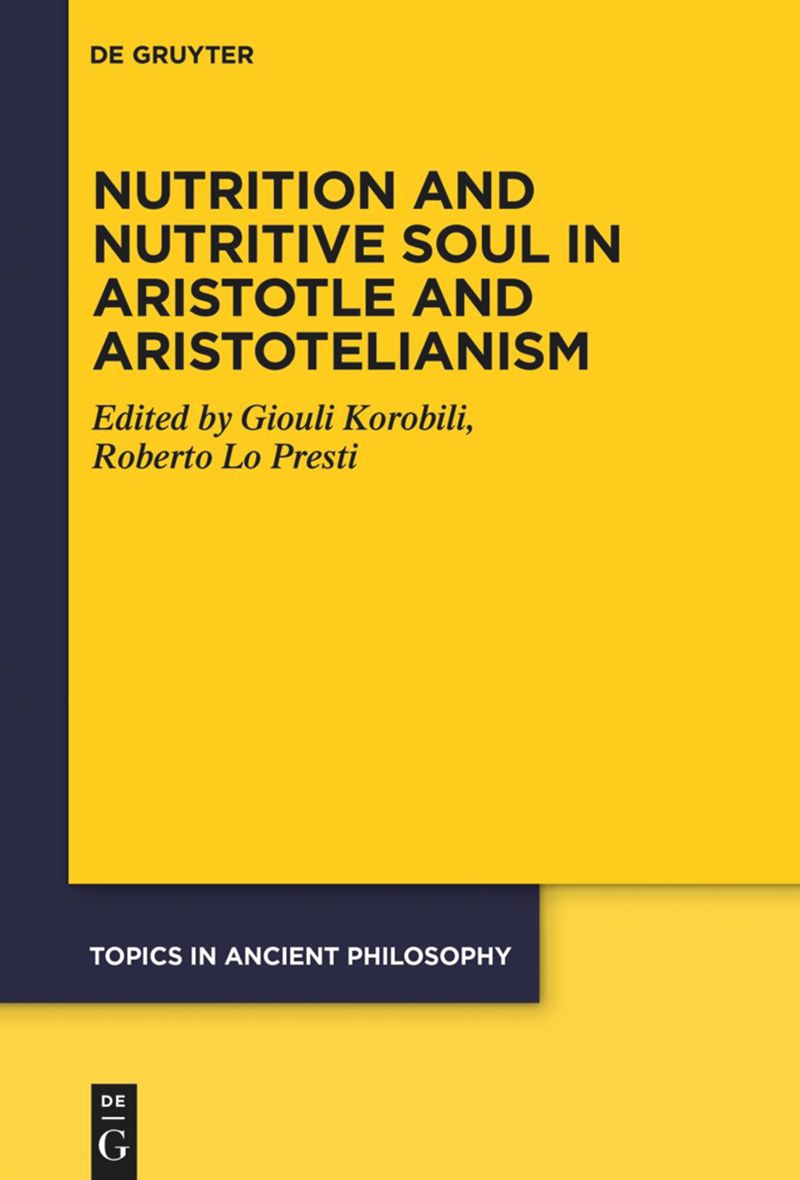
James G. Lennox revisits an issue that has been hotly debated since antiquity, namely Aristotle's identification of the nutritive and reproductive functions of the soul in chapter II, 4 of On the Soul. He examines two difficulties raised by this identification: first, if Aristotle did indeed distinguish nutrition and reproduction as two distinct functions, why does he not attribute them to two distinct capacities? Second, since capacities and functions are defined and identified on the basis of their ‘objects’ or correlates according to the doctrine of the treatise On the Soul, it is necessary either for these two functions to have the same correlate, or else for Aristotle to depart from his own principle by attributing two functions with two distinct correlates to the same capacity. Lennox adds a third difficulty: since the discussion in this chapter seems to give priority to the reproductive function, why does Aristotle emphasise the nutritive capacity of the soul rather than the reproductive or generative function? Lennox suggests that there is a common purpose to nutrition and reproduction, namely the continuity of being: the same capacity of the soul, working on the same object (blood in its proper state of coction) by means of the same processes of heating and cooling, preserves the living being through nutrition and produces the seed of another living being of the same form. Nutritive capacity provides reproduction with its efficient and material cause, and can be recognised as the most common capacity of the soul, even though the reproductive function is the one that guarantees participation in eternity.
A. M.
James G. Lennox revient sur une question fort débattue depuis l’Antiquité, à savoir l’identification par Aristote, dans le chapitre II, 4 du traité De l’âme, des fonctions nutritive et reproductive de l’âme. Il se penche sur deux difficultés soulevées par cette identification : d’une part, pourquoi Aristote, s’il a bien distingué la nutrition et la reproduction comme deux fonctions distinctes, ne les attribue-t-il pas à deux capacités distinctes ? D’autre part, comme, selon la doctrine du traité De l’âme, les capacités et les fonctions sont définies et identifiées à partir de leurs « objets », ou corrélats, il faut donc ou bien que ces deux fonctions aient le même corrélat, ou bien, sinon, qu’Aristote déroge à son propre principe en attribuant deux fonctions ayant deux corrélats distincts à la même capacité. Lennox ajoute à cela une troisième difficulté : comme la discussion de ce chapitre semble donner la priorité à la fonction reproductive, pourquoi Aristote met-il en avant la capacité nutritive de l’âme plutôt que la fonction reproductive ou génératrice ? Lennox propose de considérer qu’il existe une finalité commune à la nutrition et à la reproduction, à savoir la continuité de l’être : la même capacité de l’âme, travaillant sur le même objet (le sang parvenu à son état de coction adéquat) au moyen des mêmes processus de réchauffement et de refroidissement, préserve l’être vivant par la nutrition et produit la semence d’un autre être vivant de même forme. La capacité nutritive offre à la reproduction sa cause efficiente et matérielle, et peut être reconnue comme la capacité la plus commune de l’âme, même si la fonction reproductive est celle qui garantit la participation à l’éternité.
A. M.